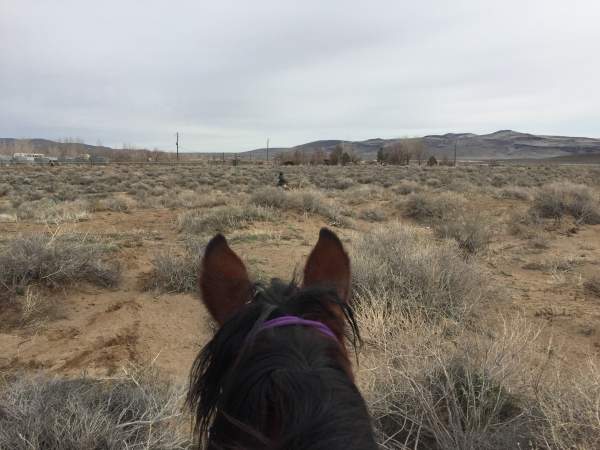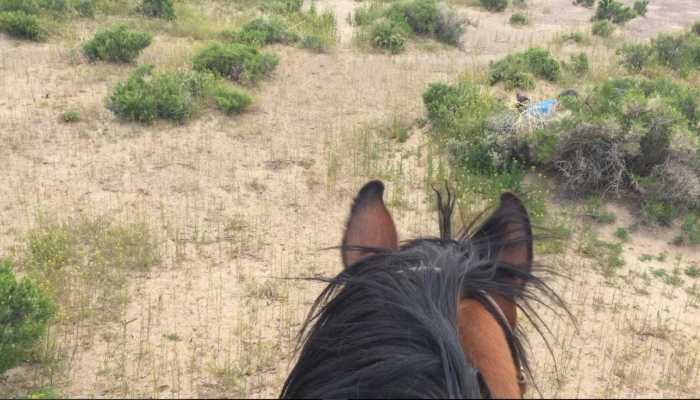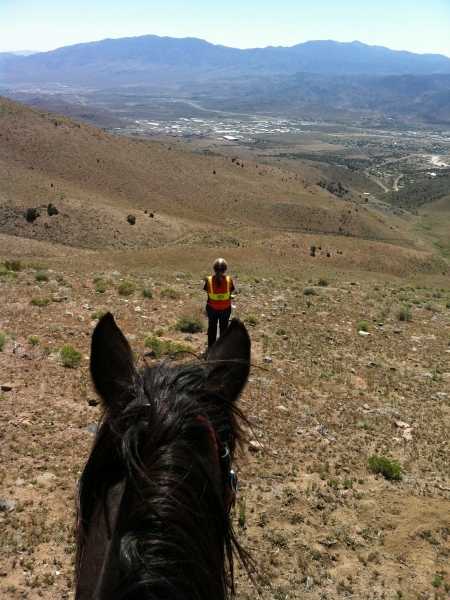|
Please note: This information sheet is not intended to be an instruction guide for equine scent detection. It is presented as an illustration of the aptitude horses have for tracking, with an emphasis on using scents to locate missing subjects. We developed these skills as an outgrowth from our historic use of targeting and clicker training for desensitizing range rescue team and MSAR horses to scary objects and unsettling situations. More specific training details appear in links provided at the end of this information sheet.
Background.
In an age of technology, high performance off highway vehicles (OHVs,) unmanned aerial devices, GPS and other modern conveniences, many search and rescue organizations have drifted away from effectively utilizing horses. You don't have to feed and clean up after an OHV and a horse can't simply be parked in a garage until it is needed. As a result, a national trend has developed wherein a preponderance of SAR units do not (or no longer) understand the inherent advantages of using horses in specific search and rescue scenarios, or how their effective use can often significantly shorten the time required to locate subjects. Equally imortant is recognizing situations where mounted searches would not be safe or effective.
Clearly there are advantages provided by motorized transport, most notably the reduced time required to travel long distances and the ability to transport people and supplies. However for actual detection, the speed of motorized travel can exceed the ability of drivers and passengers to visually process all of the signs that may be present. Furthermore, the noise generated by motorized vehicles can drown out cries for help and other auditory clues.
Trusty "ground pounding" is often the most thorough mode of searching. Effective use of appropriately trained mounted searchers can materially improve both the rate and distance of ground searches while still traveling at a speed where mounted searchers can effectively process visual clues and without constant engine noise. Plus, horses bring additional detection tools to the incident - their native abilities to notice objects and smells. These traits can be significantly advantageous if their riders are trained to recognize their horses' alert signals and tracking behaviors.

Practical experience has shown that appropriately trained mounted units can access locations that are too difficult to effectively reach on foot or by OHV. Helicopter searches are often an option, however in some types of tree cover the rotor wash can dislodge dangerous debris onto subjects and searchers. This debris can range from birds' nests and pine cones to weak limbs and on rare occasions entire trees that have weakened root systems. We should avoid teaching children to "hug a tree" only to be injured or killed by dislodged objects.
An effective SAR unit maintains a diverse "tool box" of search assets and has a command staff that maintains a thorough working knowledge as to the capabilities and most practical applicabilities for all those assets, including mounted responders. Unfortunately national trends suggest that unless a SAR hierarchy actually trains on mounted search operations, the organization tends to fixate on what they are most familiar with - ground pounding and motorized assets. The mounted unit, if present at all, is often relegated as an afterthought.
Delayed deployment or inappropriate use of mounted resources tends to produce poor performance. In such cases the poor performance attributed to the mounted team often lies in command staff's lack of training and knowledge in how to effectively use available mounted resources.
This information sheet is intended to provide general details regarding the most practical applications for mounted search teams, and to describe the vastly underutilized instinctive abilities inherent to horses - mainly their advanced sense of smell.
| 




 Operational Issues.
Operational Issues.